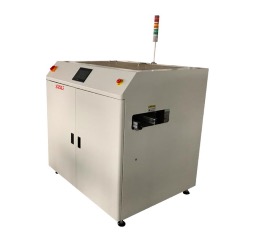The advent of the 4G solar camera has revolutionized the way we approach remote monitoring and energy efficiency. By integrating solar power with 4G connectivity, these cameras offer a versatile and sustainable solution for various applications, from security to environmental monitoring. This article will delve into how a 4G solar camera can be effectively utilized for remote monitoring and energy saving, highlighting its features, benefits, and potential applications.
Table of Contents
ToggleAdvantages of 4G Solar Camera in Remote Monitoring
Enhanced Connectivity and Accessibility
One of the primary advantages of a 4G solar camera is its ability to provide enhanced connectivity and accessibility. Unlike traditional cameras that rely on wired connections or Wi-Fi, a 4G solar camera uses cellular networks to transmit data. This means that these cameras can be installed in remote or hard-to-reach locations without worrying about the availability of power sources or internet connections. For instance, in wildlife conservation areas, a 4G solar camera can monitor animal activities and send real-time footage to researchers, even in locations with no electricity or Wi-Fi.
Sustainable Power Source
The use of solar panels to power the 4G solar camera is another significant benefit. Solar energy is a clean, renewable source that reduces the camera’s dependence on traditional power supplies. This feature is particularly useful in remote locations where it might be challenging to provide a consistent power supply. For example, installing a 4G solar camera in agricultural fields can help farmers monitor crop growth and irrigation levels, with the solar panels ensuring continuous operation even in the absence of a nearby electrical grid.
Energy Saving Benefits of 4G Solar Camera
Reduced Energy Consumption
By harnessing solar energy, a 4G solar camera significantly reduces its overall energy consumption. Traditional surveillance systems can consume a considerable amount of electricity, leading to higher operational costs and environmental impact. In contrast, a 4G solar camera operates primarily on solar power, minimizing its carbon footprint and contributing to energy conservation efforts. According to recent studies, solar-powered devices can reduce energy consumption by up to 40%, making them an environmentally friendly alternative.
Cost-Efficiency
The initial investment in a 4G solar camera may be higher than that of conventional cameras, but the long-term savings are substantial. By eliminating the need for external power sources and reducing energy bills, these cameras offer a cost-effective solution for businesses and individuals alike. For example, a construction site can benefit from the continuous monitoring provided by a 4G solar camera without incurring high electricity costs, ultimately saving thousands of dollars over the project’s duration.
Expanding Applications of 4G Solar Camera
Security and Surveillance
In the realm of security and surveillance, a 4G solar camera provides unparalleled flexibility and reliability. These cameras can be strategically placed in areas where traditional surveillance systems might be impractical or too costly to install. Public parks, construction sites, and remote properties can all benefit from the enhanced monitoring capabilities of a 4G solar camera.
Environmental and Agricultural Monitoring
Beyond security, the 4G solar camera is proving invaluable in environmental and agricultural monitoring. Researchers studying wildlife or ecosystems can deploy these cameras to gather data in real-time, without disturbing the natural habitat. Similarly, farmers can use the cameras to keep an eye on crops, livestock, and infrastructure, optimizing their operations and improving productivity.
In conclusion, the 4G solar camera offers a robust solution for remote monitoring and energy saving. By leveraging solar power and 4G connectivity, these cameras provide reliable, cost-effective, and sustainable monitoring across various applications, from security to environmental conservation. As technology continues to advance, the potential uses for 4G solar cameras will only expand, making them an integral part of our future.
0




